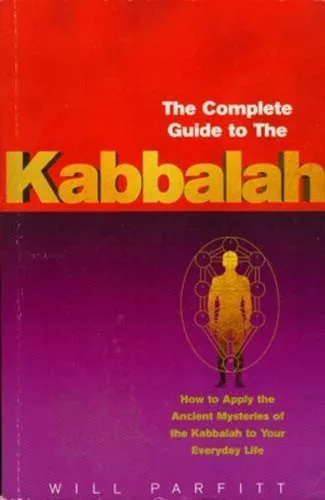Kabbalah Ancient Egyptian Hebrew Jewish Talmud Tarot Tree of Life Wisdom 4 Today
The Complete Guide to the Kabbalah: How to Apply the Ancient Mysteries of the Kabbalah to your Everyday Life.
NOTE: We have 75,000 books in our library, almost 10,000 different titles. Odds are we have other copies of this same title in varying conditions, some less expensive, some better condition. We might also have different editions as well (some paperback, some hardcover, oftentimes international editions). If you don’t see what you want, please contact us and ask. We’re happy to send you a summary of the differing conditions and prices we may have for the same title.
DESCRIPTION: Softcover: 272 pages. Publisher: Rider; (2001). Dimensions: 9¼ x 6¾ x ¾ inch, 1 pound. “The Complete Guide to the Kabbalah” clearly explains this ancient system of knowledge and how it can be effectively applied to our lives today. The Kabbalah is a practical system for understanding all aspects of our lives, from the deepest spiritual connections to the everyday experience of living in the modern world. At the core of the spiritual teachings of the Western world, the ancient mysteries of the Kabbalah are now more relevant than ever. Based on an effective map of consciousness called the Tree of Life, the Kabbalah has the potential to enhance the quality of life for individuals as well as the societies in which they live.
Blending traditional teachings with state-of-the-art psychological understanding, “The Complete Guide to the Kabbalah” is a book for everyone interested in their own development reveals the age-old mysteries of the Tree of Life in a way that is both exciting and effective. This comprehensive book is the only one you will ever need to understand the Kabbalah and explains in straightforward terms how the Kaballah can help you to understand the connections among all the different events, ideas, and relationships you experience in your life, and thereby make sense of life and live it to the fullest.. It will help you understand how to work from the heart as well as from the intellect, and to apply your insights to everyday life. And it will help you open yourself to the fabulous resources of your own inner wisdom.
CONDITION: NEW. New oversized softcover. Rider (2001) 272 pages. Unblemished, unmarked, pristine in every respect. Pages are clean, crisp, unmarked, unmutilated, tightly bound, unambiguously unread. Satisfaction unconditionally guaranteed. In stock, ready to ship. No disappointments, no excuses. PROMPT SHIPPING! HEAVILY PADDED, DAMAGE-FREE PACKAGING! Meticulous and accurate descriptions! Selling rare and out-of-print ancient history books on-line since 1997. We accept returns for any reason within 30 days! #2096d.
PLEASE SEE IMAGES BELOW FOR SAMPLE PAGES FROM INSIDE OF BOOK.
PLEASE SEE PUBLISHER, PROFESSIONAL, AND READER REVIEWS BELOW.
PUBLISHER REVIEW:
REVIEW: The Kabbalah is a collection of teachings that date back to the ancient Egyptians and which offers an explanation of who we are, why we are here, and how we can make the best of ourselves and our lives. It has had a tremendous influence on Western thought. Leonardo da Vinci and Shakespeare used it. Even the founding fathers of the United States were influenced by it. More recently, famous psychologists such as Freud and Jung were drawn to it and today, stars like Madonna, Jerry Hall and Kirk Douglas have all expressed their interest in the wisdom it has to offer.
The Kabbalah is a very straightforward and logical system to learn. It is also a very practical system and can be used for self-help and personal development, intellectual understanding and spiritual growth. Kabbalistic teachings can be easily and genuinely applied to all areas of your life for deeper understanding, problem solving and generally enhanced appreciation of whatever issues are currently on your mind. The teachings are summarized in a diagram called the Tree of Life which presents visually the information accessible through the Kabbalistic teachings and reveals incredible patterns of connections that explain previously misunderstood areas.
The Kabbalah has successfully helped thousands of people over thousands of years to understand themselves and every aspect of their lives and is an indispensable source of wisdom and practical, relevant knowledge. “The Complete Guide to the Kabbalah” by Will Parfitt is the only book you will ever need to understand and use the Kabbalah effectively in your daily life.
Will is a registered psychotherapist who is well-known as an inspiring and innovative group course leader. He has been a student of the Kabbalah for more than thirty years, and has taught the Kabbalah for twenty years. Will is the director of several distance education courses including the Kabbalah and the Tree of Life. He has published many articles in his field, and is the author of several books. Will has extensive experience of working with psycho-spiritual development, and he travels internationally to run courses on a variety of subjects, including both the Kabbalah and Psychosynthesis in which he completed training in 1981. He lives in Glastonbury where he offers coaching, mentoring and professional supervision.
PROFESSIONAL REVIEWS:
REVIEW: The Kabbalah is part of ancient Talmudic literature. Straightforward, comprehensive and enlightening, this guidebook is used as a standard textbook by many Kabbalist courses. This guide reveals the ancient mysteries of the Tree of Life in an exciting, effective and relevant way, blending traditional teachings with state of the art psychological understanding. Explains how the Kabbalah can help you to understand your connection to things.
REVIEW: You will be amazed at the ways in which the Kabbalah can work as a powerful tool for self-realization, exploring important ideas about life, and discovering profound truths at the heart of existence. In “The Complete Guide to the Kabbalah”, teacher Will Parfitt takes you on a fascinating journey, explaining: the Tree of Life and how it relates to you; how to use the Kabbalah to explore your spirituality and express your personality; the Kabbalistic approach to the Tarot and path-working; ways in which the Kabbalah can promote health and healing; angels and demons and how they relate to the Tree of Life; the Kabbalistic secrets of sexuality and self-fulfillment; and more. Discover how, with study and practice, the Kabbalah can deepen your connection to the universe and guide you throughout your life.
REVIEW: [From the Author] “The Complete Guide to the Kabbalah is a miracle. In 1988 Element Books brought out my book ‘The Living Qabalah’ which was subsequently described as a classic on the subject. This of course was really pleasing, but like all authors over the years I saw how I could improve the book. “The Complete Guide to the Kabbalah” is a new book. Apart from all the new material, it also gave me the opportunity to rewrite and update all the better bits from the old book. With people like Madonna talking about their interest in Kabbalah, this wonderful system of personal and spiritual development is now more popular than ever.
It isn’t just a passing fad, however, and its perennial wisdom will continue to flourish for many more thousands of years, as it has done already. Particularly relevant to use in the hubbub and stress of modern living, the Kabbalah is a practical system of self-development that is easy to learn and to apply. The Kabbalah aims to help you live life to the full, and perhaps most importantly in our modern world, learn to be here with respect for the planet itself and all the life forms it supports.
This book will certainly enable someone new to the Kabbalah to learn what it’s about and how to use it in the modern world in a comprehensive way. And for those with previous experience of Kabbalah I think you’ll find the new correspondences, connections, applications and so on really interesting and exciting.
READER REVIEWS:
REVIEW: The original title, 'The Tree of Life', was my introduction to the Kabbalah. I have to say it has made an enormous influence on my life. I now believe I have a better than average understanding of Kabbalah. I won't say either that Will Parfitt is extremely easy to comprehend, but then Qabalah is not a simple concept and most of the other apparently introductory stuff I've looked at is lacking in substance or seemingly misunderstands the need for people to recognize the basic principles of Qabalah. However I would certainly recommend this as a best of breed starting point, and have made several purchases of this book, as gifts to friends, simply because I believe it can improve their lives. It is also my personal belief that it should be one of a Qabalist's objectives in life to encourage others, so if you are looking for a starting point, this is the best I have found.
REVIEW: I have half a dozen books on Kabbalah and I use this one more than all the others. I find it to be the most relevant and useful in my life. I often reread passages at different times and I learn some thing new or see a different aspect each time. I found it very interesting, and easy to understand for someone who has no previous knowledge on the subject. A lot of the content was specific to the different spheres and their meanings. The thing I found most helpful was the exercises included. They are simple, yet challenging, and they are written so people of different religions can use them for personal reflection.
REVIEW: Will Parfitt has written an excellent book on Qabalah, concentrating on the practical applications of the system, providing psychological, mystical and magical techniques. This is a book I frequently recommend to people asking me about Qabalah, it is well written, concise and perhaps unique in it's way of helping the reader to understand the tree of life on more levels than just the intellectual. The exercises offered in the book are great, and will likely give even the most seasoned Qabalist a new understanding of the Sephiroth. Parfitt also includes excellent information on how the Qabalah fits in with mysticism, magick and especially psychology. If you want to use the tree of life as a tool for spiritual and psychological development, this is perhaps the best book since Regardie's "Middle pillar".
REVIEW: Whenever someone asks me which book to first read in order to start learning magick I always recommend this book by Will Parfitt. The great thing about it is that he guides the reader through a sequence of experiences so that you get to experience the different "energies", "paths" and "spheres", rather than just read about them. Most of the exercises are also easy enough to do so that they do not require an enormous amount of self discipline. And the beginning student of magick will, after reading and experiencing this book, have an easy time understanding most western magick using either his direct knowledge of the meaning of the different parts of the three of life, or by learning about it using the intuitive faculties for understanding which this book helps develop. So, especially if you belong to the group of people who plods through dark tomes filled with what appears as unfathomable kabblistic references or such and want to start experiencing and doing magick - this is a really good start.
REVIEW: This book is one for serious students, while it explains a very complex text in a more simplified manner, it is not to be taken light-heartedly. This book is straight forward and to the point. All contents should be read and re-read until fully understood by the individual reader. On the surface the teachings may seem insignificant, but as the book explains you can not make the Journey into Enlightenment without encountering and facing your own dark side. While you may choose when to open your eyes to spirituality you may NOT choose what you see. Take the exercises seriously, and listen closely to find exactly where your answers are coming from. This book is a cornerstone, an absolute must read! Very well written and very helpful in the education and self-awareness process.
ADDITIONAL BACKGROUND:
Ancient Israel/Judaea: Human settlement in Judaea stretches back to the Stone Age and the region is believed by paleoanthropologists to have been one of the routes through which homo-sapiens traveled out of Africa to colonize the rest of the world around 100,000 years ago. However the Mousterian Neanderthals were the earliest known inhabitants of the area and can be traced back to about 200,000 B.C. The first anatomically modern humans to live in the area were the Kebarans (about 18,000 B.C.). They were followed by the Natufian culture (about 10,000 B.C.), the Yarmukians (8,500 to 4,300 B.C.) and the Ghassulians (4,300 to 3,300 B.C.). The Semitic culture followed the Ghassulians. During this period the inhabitants of the region became urbanized and lived in city-states, one of which was Jericho. Archaeological evidence of human settlement dates back 11,000 years in the case of the city of Jericho, believed to be the oldest continuously inhabited settlement in the world.
The area's location at the center of routes linking three continents made it the meeting place for religious and cultural influences from Egypt, Syria, Mesopotamia, and Asia Minor. It was also the natural battleground for the great powers of the region and subject to domination by adjacent empires, beginning with Egypt in the 3rd millennium B.C. Traditional history refers to the early inhabitants as the sons of Shem and speaks of an invasion by a people called Canaanites (the Phoenicians) descended from Ham. “Recorded” history traditionally begins with Abraham being promised by God that he would become the father of a great nation. If the events described in the Bible actually took place, they would appear to take place circa 1,800 B.C. Terah and his son Abram (later named Abraham) move from the Sumerian city of Ur to the city of Haran. Abraham declares his belief in the One God, which initiates the beginning of Judaism. Abraham marries Sarai (later named Sarah). Abraham and his extended clan move to the land of Canaan (Israel). Abraham’s descendants became the most famous inhabitants of the region, the Israelites.
Most historians believe these events to be purely mythical. What history does record is that in about 1600 B.C., Egypt was conquered by Canaanite tribes known as the Hyksos by the Egyptians. The Hyksos were eventually defeated by Kamose, the last king of ancient Egypt’s seventeenth dynasty. However it is believed that much of the Hyksosian population might have remained settled in the region of the Nile Delta under Egyptian dominion. Egypt's 19th dynasty began with the reign of Ramses I. Ramses II ( 1279- 1213 B.C.) signed a treaty with the Hittites after losing the northern Levant to the Hittite Empire. If Moses was a historical figure, this is about the time of the Exodus, and it is believed probable that the Exodus involved the remaining Hyksosian population, persecuted by the ethnic Egyptians, returning to the region of Canaan recently lost by Egypt to the Hittites. According to the Bible, Moses led the Israelites out of Egypt and eventually came to "the promised land" in Canaan (which was really a return to their ancestral homeland). Moses died before entering Canaan, and Joshua became the next leader.
About 1,200 B.C. the Hittites were conquered from the North, and he northern coastal Canaanites (called the Phoenicians by the Greeks) were temporarily displaced, but returned when the invading tribes showed no inclination to settle but instead continued southward toward Egypt. The ancient Egyptians referred to this horde of invading tribes that swept across Asia Minor and the Mediterranean the “Sea Peoples”. Some hold that the Philistines originated from them. In any event by 1185 B.C. the invasion of the Sea Peoples had been repelled by the ancient Egyptians. Deflected back northward, the “Sea Peoples” settled in Canaan, in the cities of Gaza, Gat, Gezer, Ashkelon, and Ashdod. These people are the Philistines of the Bible and provided the name Palestine to the area. In about 1140 B.C. the Canaanite tribes tried to destroy the Israelite tribes of northern and central Canaan. According to the Bible, the Israelite response was led by Barak, and the Hebrew prophet Deborah.
Ultimately the Canaanites were defeated, and ancient Israel was ruled by a series of “Judges”. Saul became the first king of the Israelites in approximately 1020 B.C. David succeeded him in 1006 B.C., and moved the capital from Hebron to Jerusalem. David waged several successful military campaigns, annexing a large area from Philistine to Damascus. David was succeeded by his son Solomon in about 965 B.C., who constructed the Temple of Solomon at Jerusalem and had a prosperous reign. Following the death of King Solomon in about 922 B.C., the realm was divided into a Northern Kingdom, known as Israel and a Southern Kingdom, known as Judah, whose capital was Jerusalem. For the first sixty years the kings of Judah aimed at re-establishing their authority over the kingdom of the other ten tribes (the Northern Kingdom), so that there was a state of perpetual war between them. However for the following century they were for the most part in friendly alliance, co-operating against their common enemies, especially against the Syrians.
In 722 B.C. the Assyrians under Shalmaneser, and then under Sargon the Great, conquered Israel (the northern Kingdom), destroyed its capital Samaria, and sent many of the Israelites into exile and captivity. The ruling class of the Northern Kingdom were deported to other lands in the Assyrian empire and a new nobility was imported by the Assyrians. Judah, the southern Kingdom, fell to the Babylonians a little over a century later in 597 B.C. When in 586 B.C. the conquest of Judah was completed by the Babylonians under Nebuchadnezzar, a large part of Judaea's population was exiled to Babylon. In 559 B.C. Cyrus the Great became King of Persia, and by 539 B.C. the Babylonian Empire fell to Persia. Persia ruled over Israel until 332 B.C., when the Persian Empire was defeated by the Macedonian Alexander the Great. In the power struggle which ensued following Alexander’s death in 323 B.C., that part of his empire which included Israel changed hands at least five times in just over twenty years. The post-Alexander Hellenic Seleucid Kingdom ruled Babylonia and Syria; and the Hellenic Ptolemaic Kingdom ruled Egypt.
In 198 B.C. the armies of the Seleucid King Antiochus III (Antiochus the Great) ousted Ptolemy V from Judaea and Samaria. The Kingdom of Judaea became a client-kingdom of the Persian Seleucid Dynasty. It gained its independence briefly during the middle of the second century B.C. during the period of Hasmonean State A deterioration of relations between Hellenized Jews and religious Jews led the Seleucid king Antiochus IV Epiphanes to impose decrees banning certain Jewish religious rites and traditions. Consequently, the orthodox Jews revolted under the leadership of the Hasmonean family, (also known as the Maccabees). This revolt eventually led to the formation of an independent Jewish kingdom, known as the Hasmonaean Dynasty, which lasted from 165 B.C. to 63 B.C. The Hasmonean Dynasty eventually disintegrated as a result of civil war between the sons of Salome Alexandra, Hyrcanus and Aristobulus.
Following the end of Rome’s Third Mithridatic war in 63 B.C. and the defeat of Mithridates VI of Pontus, general Gnaeus Pompeius Magnus (Pompey the Great) found himself embroiled in this succession struggle. Ultimately Pompey put Hyrcanus in charge of the kingdom as prince and high priest. Judaea and Galilee became client kingdoms of Rome, which meant that, although independent, they had a subservient position towards the Republic. After Julius Caesar’s defeat of Pompey at the conclusion of Rome’s Civil War, Hyrcanus was succeeded by his courtier Antipater. Both Caesar and Antipater were killed in 44 B.C., and Herod (Antipater's son) was appointed as Governor (Tetrarch) by Rome 41 B.C. He became the outright ruler (Basileus) of Judaea in 37 B.C. and was later known as King Herod the Great. During his reign the great port of Caesarea Maritima was built. He died in 4 B.C., and Judaea became part of a larger Roman province, also called Judaea, annexed to the Roman province of Syria.
Between then and the outbreak of the first Judaean Revolt in 66 A.D., a series of fourteen Procurators (Governors) ruled over Judaea from the magnificent harbor city built by Herod I at Caesarea. The first of these governors imposed a census of Jews so as to levy heavy taxes. Many of the later Governors of Judaea were increasingly and especially cruel, including Pontius Pilate, Antonius Felix, Albinus, and the last (before the revolt), Gessius Florus. The final insult was when in 66 A.D. Gessius Florus demanded that Jerusalem's Temple pay him a large amount of money for his own personal use. In protest the Jews quit making daily sacrifices to the reigning Roman Emperor (Nero), and the insult amounted to a declaration of war. Several different factions of Jews were able to band together long enough to rout the Roman garrisons stationed in and around Jerusalem.
In response, the Romans massacred innocent Jews elsewhere throughout the Empire. In Ceasarea 20,000 Jews were put to death in the space of an hour. In Damascus, Syria, the Roman garrison there executed 10,000 Jews. Rome's 12th Legion was dispatched from Syria to put down the revolt, but the Jewish rebels were able to repel these troops. Roman Emperor Nero then dispatched his greatest general against the Jewish rebels, Vespasian, leader of Rome's armies to victories in Britain and Germany, and gave him command of some of Rome's most elite forces. As recounted by the great historian Josephus, Vespasian first encircled the Jewish forces around Galilee, which fell within a few months. By the middle of 68 A.D., Vespasian's troops had crushed the revolt throughout all of Palestine, with the exception of Jerusalem and the zealot fortress of Massada. Vespasian was forced to return to Rome upon the death of Nero, and the resulting civil wars which rocked Italy. Vespasian was declared Emperor by his troops, as well as the troops in Alexandria and in the Danube region.
Fighting his way into Rome, Vespasian vanquished the army of his rival Lucius Vitellius, and within a year he victoriously claimed his throne in Rome. Upon his arrival in Rome, Vespasian dispatched his son in his stead to finish off the Jewish rebels. The city of Jerusalem was sacked and the Temple destroyed. An estimated 1,100,000 Jews died in the war, and the golden Menorah and the other holy implements of the temple were taken to Rome as booty and eventually lost to history. Some historians believe that the mountain fortress of Massada, near the Dead Sea, held off the Roman Legions for another three years. The era was of enormous consequence not only for those of the Jewish faith, but for all of Christianity, and the coinage leading up to the Revolt as well as the coinage struck by the rebels during the revolt are of tremendous significance to collectors. However from this time forward, notwithstanding a second revolt against Rome from 132 to 135 A.D., Israel was either a possession of the Roman, Byzantine, or Arab Muslim Empire up through the twentieth century when an independent Israel was again reborn [AncientGifts].
The Ancient City of Jericho: The city of Jericho is remembered for the story in the Book of Joshua in the Bible regarding its destruction by the Israelites. Excavations have revealed that Jericho is one of mankind’s earliest settlements, dating back to about 9000 BC. It also has the oldest known protective wall in the world. Continuing excavations have revealed stone towers which are even older. The reason for the earliest Jericho settlements is the numerous springs which are situated in and near the city. These springs supply the area with enough water to sustain a large population.
Jericho started as a popular camping ground for the hunter-gathers of the Natufian culture around 10,000 BC. It wasn't until the cold and drought caused by the last Ice Age that year-round habitation and permanent settlements began in the area. This period was known as the “Younger Dryas” and occurred around 9600 BC. Tell es-Sultan two kilometers (one and one-quarter miles) north of modern-day Jericho, became the earliest permanent settlement. The name of the tell (settlement mound) translates to Sultan's Hill. It was a Pre-Pottery Neolithic or “New Stone Age” settlement. It is situated at the site of the Ein as-Sultan spring, later called Elisha's Spring, which supplied it with water.
By about 9400 BC the settlement grew to include more than 70 homes. These circular dwellings measured about 5 meters (or 16 feet) in diameter. They were built with clay and straw. Archaeological evidence indicates that by 8000 BC Jericho was surrounded by a stone wall 3.6 meters (12 feet) high and 1.8 meters (6 feet) thick. Inside the wall was a stone tower 8.5 meters (28 feet) high and 9 meters (30 feet) wide at the base. The tower had an internal staircase with 22 steps. The only towers older than Jericho’s have been found at Tell Qaramel in Syria.
By this pointing time (about 8,000 BC) Jericho had grown to about 10 acres in size (40,000 square meters or 430,000 square feet). It is thought that the wall was used to protect the settlement from flood waters. The tower was used for ceremonial purposes. This suggests that there was a social organization within the town. Some scholars believe that the tower was used to motivate people into taking part in the communal lifestyle. Estimates vary on the population with a low of 300 to a high of 3000.
At this time the inhabitants domesticated wheat, barley and legumes. It is highly probable that irrigation had been invented to provide enough land for the cultivation of these crops. They supplemented their diet by hunting wild animals. However after a few centuries the first settlement was abandoned. A second settlement was established around 7,000 BC by an invading people. These people absorbed the original inhabitants into their culture. The second settlement of Jericho was also a Pre-Pottery Neolithic settlement.
This new settlement expanded the range of domesticated plants. There is evidence for the possible domestication of sheep at this time. Buildings were rectilinear structures made of mudbricks. Each building consisted of several rooms situated around a central courtyard. The rooms had terrazzo floors made of lime. The courtyard had a floor made of clay. Other advancements include flints in the shape of arrowheads, sickle blades, burins (used as chisels), scrapers, and axes. Also found were grindstones, hammerstones, and axes made of greenstone.
Dishes and bowls were carved from soft limestone. The greatest cultural distinction of this culture was that they kept the heads of deceased relatives by plastering the skulls and painting the features of the person on it. These skulls were kept in the home and the rest of the body was buried. This second settlement lasted until about 6000 BC. From that time forward there is little evidence of occupation at Jericho for at least 1000 years.
After this point in time, around 5,000 BC, new settlements were established in Jericho periodically. These settlements were still Neolithic, but there is evidence that they were producing pottery. Jericho became a walled town again at the end of the 4th millennium BC. Evidence shows that the walls have been rebuilt many times. The largest of these settlements was constructed around 2600 BC by the Amorites. About 2300 BC there was once more a break in the occupation of the site.
Jericho was taken over by the Canaanites around 1900 BC. The city reached its greatest prominence between 1700 and 1550 BC. This was due to the rise of aristocrats that utilized chariots. These aristocrats were Maryannu from the Mitannite state to the north. Their rise caused a greater urbanization in the surrounding area, including Jericho. By this time there were two walls around the city forming a double enclosure made of mud brick. The outside wall rested on top of a stone base.
Though Jericho’s walls were impressive in size, they were not stable. Bronze Age Jericho fell around 1573 BC when it was violently destroyed by an earthquake. Charred wood found at the site suggests that the remains of the city were burned. Buried food supplies also suggest that it was not captured following a siege. Jericho remained unoccupied until the late 10th or early 9th century BC when the city was again rebuilt.
Around 1,400 BC according to Biblical accounts Jericho was the first city attacked by the Israelites. This occurred according to legend after the Israelites crossed the Jordan River and entered Canaan. The Wall of Jericho was destroyed when the Israelites walked around it for seven days carrying the Ark of the Covenant. On the seventh day Joshua commanded his people to blow their trumpets made of rams' horns. They shouted at the walls until they finally fell down.
Excavations of the site reveal a network of collapsed walls that date to around the late 17th or early 16th century BC. The most likely cause of the collapse was an earthquake. Descriptions of later destruction caused by earthquakes in 1267 and 1927 AD match the description of the collapsed walls in the Biblical account millennia earlier. In each description the cliffs above the Jordan River fell into the river and dammed it up. These events also correlate with the archaeological record that Jericho was unoccupied from the late 15th century to around the 10th century BC.
Given the contradiction between the archaeological and geological records versus Biblical legends, historians believe that the Bible story is allegorical. According to the best historical determinations the Biblical legends of Jericho were written sometime after 722 BC. This was almost a millennia after the actual earthquake which leveled much of Jericho’s walls. The legend was created to justify claims by the Kingdom of Israel at that time that the territory surrounding Jericho, including the city itself, belonged to them.
The Biblical legends of the fall of Jericho are many centuries off the date of the actual earthquake and archaeological evidence that Jericho was abandoned. Nonetheless biblical Scholars point to the destruction of the walls as proof that the story in the Bible is true. They state that the only error in the Biblical account is the misdating of the earthquake. Thus Biblical scholars continue to insist that the earthquake was an act of God that rewarded the Israelites for following his commands. On one account Biblical records do agree with archaeological records. Following the earthquake Jericho remained abandoned until Hiel the Bethelite established himself there in the 9th century BC. [Ancient History Encyclopedia].
Tel Kanbri, Israel, Bronze Age City: Tel Kabri is an archaeological site in the Western Galilee in northwestern Israel. It is the location of one of the largest palaces in Canaan in the Middle Bronze Age. The palace dates to the period in which Tel Kabri was at the height of its power, approximately 2,000 through 1,500 BC. The palace belonged to a political entity that is as yet unnamed and is largely unknown.
Like many Ancient Near Eastern archaeological sites, much of the Kabri site is located on a “tell”. A "tell" is a manmade mound composed of layers or strata. Each strata represents the remains of a period of occupation. These strata are deposited one on top of the other as settlements rose and fell. The strata are compressed over the centuries by the weight of overlying strata and occupation levels. Of course the most recent strata or occupation layers are found at the top of the tell.
The strata at Kabri date from the Neolithic period, which are the deepest strata. They end with modern times which are the strata nearest the surface. It is a relatively low mound extending over a wide area. The area today is covered by avocado groves tended by the local kibbutz, Kibbutz Kabri. The site has been excavated by archaeologists from time to time since 1956. There were two surveys, five minor excavations, and two major excavations. The first major excavation was conducted from 1986 through 1993. The archaeological expedition found many of the structures comprising the Middle Bronze Age palace. The excavations also uncovered floor and wall frescoes reflecting the style of far-off Aegean cultures.
The second major excavation began in 2005 when the University of Haifa and The George Washington University reopened excavations of the site. The ongoing excavations have provided archaeological evidence of the development of the palace. The findings permitted study of the Canaanite society and economy of Kabri. The studies encompassed as well the surrounding areas and their relationship to the wider Mediterranean world, particularly the Aegean. The current expedition has found additional Aegean-style wall and floor frescoes. In 2013 and 2015 large storage areas and many ceramic storage vessels were uncovered. Together they represent the oldest wine cellar in the world and the largest in the Ancient Near East.
Kabri saw its heyday in the Middle Bronze Age. However the area was inhabited as far back as the Pottery Neolithic period, 6,400 through 4,500 BC. Kabri remained occupied through the early part of the Chalcolithic period, or Copper Age, from about 4500 through 3500 BC. The inhabitants were drawn to Kabri by the waters of its springs. But the Kabri settlements mysteriously disappeared in the later part of the Copper Age. Then in the Early Bronze Age which began around 3500 BC a Canaanite town sprang up on the site of Tel Kabri. The town likely covered the northern half of the tell.
In ancient times the region that includes modern Israel and surrounding areas was inhabited by a people called "Canaanites". Their land was called “Canaan”. They were eventually displaced by Israelites sometime in the Iron Age. The circumstances of their displacement are much debated by historians. Along with countless others throughout the eastern Mediterranean the Canaanite town situated atop Tel Kabri disappeared. This occurred around the end of the Early Bronze Age in about 2100 BC. At that time there was a mysterious, unidentified wave of destructive events generally known today as the "Early Bronze Age Collapse."
The site remained uninhabited until early in the first part of the Middle Bronze Age, which equates approximately to 2000 to 1720 BC. Archaeologists refer to the period as “Middle Bronze Age I”. In the early and middle parts of the Middle Bronze Age Tel Kabri was inhabited once more. This is evidenced by the appearance of new tombs and private houses at the site. During much of the early Middle Bronze Age the Kabri settlement appears to have been unfortified. Kabri is notable for the remains of four palaces. The first palace and fortifications were constructed during the middle to late Middle Bronze Age.
Construction of the first palace began after residential structures built earlier in the Middle Bronze Age were razed. The land was flattened out and covered with a layer of earth and debris. The main structures were two thick parallel stone walls which Kabri archaeologists call the "corridor". There’s a room at its north terminus with a plaster floor. The first palace may have resembled a fortress more than a grand residence for royalty. Then Kabri's palace grew larger, becoming what archaeologists call the "second palace”. This occurred at about the juncture between the earlier portion of the Middle Bronze Age (Middle Bronze Age I) to the latter portion of the Middle Bronze Age. This is known to historians as the “Middle Bronze Age II”, which lasted from about 1720 BC to beween1550 or 1500 BC.
The larger second palace replaced the fortress-like first palace. The corridor and northern room were filled in. Three rooms were built to the east of the corridor area. One or possibly two meeting halls were built to the west. A thick barrier of earth was built around the site. This would help the rulers secure their authority and likely also give Kabrians a greater sense of safety. It is believed that around this time Kabri and the coastal city of Acre were in contention for control of the Western Galilee. This may have been reflected in the construction of the fortress-like first Kabri palace. Then as well it would be reflected in the great earthen wall around the second palace. This might also provide an explanation for the abandonment of smaller sites near Kabri. The inhabitants of those smaller sites loyal to Kabri under such circumstances may have moved to Kabri and to the fortifications of some of Kabri's outposts, such as nearby Achziv.
Later on still within the Middle Bronze Age II period the palace was greatly expanded again. This time the expansion was to the northeast and south, creating what archaeologists call "third palace”. It was at this time that Kabri apparently won out over Acre for control of the Western Galilee. This supremacy may be reflected in a change in the focus of the palace. In the new third palace the emphasis seems to have shifted away from defense and military might. The new emphasis of the third palace seemed displays of culture and wealth. The third palace incorporated many advanced architectural elements. It was decorated with wall frescoes and floor paintings incorporating Aegean art styles and themes. These changes may have represented an attempt to make Kabri appear to be a player on the international stage.
One final expansion resulted in the "fourth" and final palace at Kabri. The fourth palace included a separate two-room building. In that building plaster-covered stone slabs from the beach called "orthostats" lined the foundations. The building was called the "Orthostat Building" by the archaeologists excavating Kabri. Most importantly the fourth palace included the Southern Storage Complex. It also included perhaps many more rooms to the north and west of the Southern Complex, but unfortunately beneath a contemporary roadway and so inaccessible to archaeologists.
The storage rooms that may lie beneath the Southern Complex probably belong to the third palace. The fourth palace was larger than any of the previous three. However it was not as artistically decorated as the third palace. In fact the frescoes and other plaster paintings of the third palace appear to have been destroyed. Their fragments were used not as decoration but as packing material. The painted fragments were turned face down to conceal their colors. They were then used as filler within the white or plain floors and walls of the fourth palace. It is believed that this change was not the result of Kabri losing contact with the Aegean. Historians believe the change was more likely the result of a shift in the focus of the Kabrians’ international communications to Cyprus at this time. The fourth palace appears to have been expanding in size right up to about 1550 BC.
However around 1550 BC, perhaps even earlier, the palace was destroyed and the entire site was abandoned. The reasons for this and the precise date are unknown. Archaeologists excavating Kabri suggest that the storage rooms may yield clues. Following the destruction of the Middle Bronze Age palace there is little evidence that the site was occupied again until the 8th century BC during the Iron Age. At that time Phoenicians established a town called Rehov. The Phoenician city-state of Tyre ruled what had been Kabri. There was a garrison of Greek mercenaries at the site. However in 585 BC the Neo-Babylonian armies of King Nebuchadnezzar destroyed many sites in the Levant, including the town and citadel of KabriThe Neo-Babylonians eventually captured Tyre itself 12 years later.
In 538 BC the Persian armies of Cyrus the Great swept through the region. A small village appeared on Tel Kabri. The village only lasted until 332 BCE when Alexander the Great and his Macedonian army swept through the region. In the Hellenistic period after 332 BC Tel Kabri itself was largely deserted. The only known organized human activities in this period were local burials in the old Phoenician citadel. However no one appears to have lived at Tel Kabri. Starting in the Roman Period an area to the east of the tell took a name derived from Kabri. Kabrita was its name. Kabrita thereafter became the preferred locale for occupation in the area right up until the foundation of the modern State of Israel.
In the Ottoman period of about 1517 through 1917 AD the Arab village of el-Qahweh was founded at Tel Kabri. It later became known as en-Nahr, and there was also an offshoot village of et-Tell. The inhabitants operated farms at en-Nahr, and a mill at et-Tell. A major aqueduct was also constructed from Kabri to Acre during this period. The Ottomans were defeated in World War I. This was followed by the British Mandate Period which ran from 1920 through 1948. After World War I and during the Mandate the tell remained relatively unchanged. The only addition was a road running through the tell from the coastal city of Nahariyyah to a nearby Jewish village.
During Israel's War of Independence in the late 1940s the Arab villages on Tel Kabri and the village of Kabri to the east emptied. In 1948 the site became part of the current Kibbutz Kabri. In 1956 the first archaeological remains of the Neolithic inhabitants were identified and the story of Tel Kabri as an archaeological site began [Ancient History Encyclopedia].
Jerusalem Dig Uncovers Ancient Greek Citadel: In the shadow of Jerusalem’s city walls, archaeologists have found a fortress that spawned a bloody rebellion more than two millennia ago. What Jews call the Temple Mount rises above the remains of a Greek citadel exposed by an archaeological dig in Jerusalem. Israeli archaeologists have uncovered the remnants of an impressive fort built more than two thousand years ago by Greeks in the center of old Jerusalem. The ruins are the first solid evidence of an era in which Hellenistic culture held sway in this ancient city.
The citadel, until now known only from texts, was at the heart of a bloody rebellion that eventually led to the expulsion of the Greeks, an event still celebrated by Jews at Hanukkah. But the excavation in the shadow of the Temple Mount, called Haram esh-Sharif by Muslims, is stirring controversy in this politically charged land. “We now have massive evidence that this is part of the fortress called the Acra,” said Doron Ben-Ami, an archaeologist with the Israeli Antiquities Authority who is leading the effort.
Situated under what had long been a parking lot between the Temple Mount to the north and the Palestinian village of Silwan to the south, the site is now a huge rectangular hole that plunges more than three stories below the streets. On a recent visit, workers cleared away dirt as Ben-Ami jumped from rock to rock, enthusiastically pointing out newly excavated features. Massive stones as well as smaller rock provided clues to the identity of the fortress. Roman houses and a Byzantine orchard later covered the site, which more recently was a parking lot.
Alexander the Great conquered Judea in the 4th century B.C., and his successors quarreled over the spoils. Jerusalem, Judea’s capital, sided with Seleucid King Antiochus III to expel an Egyptian garrison, and a grateful Antiochus granted the Jews religious autonomy. For a century and a half, Greek culture and language flourished here. Yet archaeologists have found few artifacts or buildings from this important era that shaped Jewish culture. Conflicts between traditional Jews and those influenced by Hellenism led to tensions, and Jewish rebels took up arms in 167 B.C. The revolt was put down, and Antiochus IV Epiphanes sacked the city, banned traditional Jewish rites, and set up Greek gods in the temple.
According to the Jewish author of 1 Maccabees, a book written shortly after the revolt, the Seleucids built a massive fort in “the city of David with a great and strong wall, and with strong towers.” Called the Acra—from the Greek for a high, fortified place—it was a thorn in the side of Jews who resented Greek dominance. In 164 B.C., Jewish rebels led by Judah Maccabee took Jerusalem and liberated the temple, an event commemorated in the festival of Hanukkah. But the rebels failed to conquer the Acra. For more than two decades, the rebels tried in vain to overwhelm the fortress. Finally in 141 B.C., Simon Maccabee captured the stronghold and expelled the remaining Greeks.
Towering Over the Temple? What happened next has confused and divided scholars for more than a century. According to historian Josephus Flavius, a Jew who served Rome in the first century A.D., Simon Maccabee spent three years tearing down the Acra, ensuring that it no longer towered over the temple. The temple was located to the north of the City of David, on ground more than a hundred feet above the boundaries of early Jerusalem, so Josephus’s story explained this geographical puzzle. But the author of 1 Maccabees insisted that Simon actually strengthened the fortifications and even made it his residence.
This discrepancy spawned many theories in the past century, but no solid archaeological evidence. When an Israeli organization named the Ir David Foundation announced plans to build a museum on top of the parking lot, Ben-Ami began a salvage excavation in 2007. His team dug through successive layers, from an early Islamic market, through a Byzantine orchard and a hoard of 264 coins from the seventh century, under an elaborate Roman villa, and then beyond a first-century place for ritual Jewish bathing. Under buildings that pottery and coins demonstrated to be from the early centuries B.C., the archaeologists found layers of what looked like random rubble.
But the rubble turned out to be carefully placed rocks that formed a glacis, or a defensive slope protruding from a massive wall. “The stones are in layers, at an angle of 15 degrees at the bottom and 30 degrees at the top,” Ben-Ami said, gesturing at color-coded cards pinned into each layer. “This wasn’t a building that collapsed; this was put here on purpose.” Archaeologists exposed a Roman villa close to the Greek fortress. After the citadel’s destruction, the site became a residential area.
The team also found coins that date from the time of Antiochus IV to the time of Antiochus VII, who was the Seleucid king when the Acra fell. “We also have Greek arrowheads, slingshots, and ballistic stones,” he added. “And also amphorae of imported wine.” Since observant Jews drank only local wine, that suggests the presence of foreigners or those influenced by non-Jewish ways. Sling stones and arrowheads found in and around the Greek fortress attest to pitched battles fought by Greek and Jewish defenders against those Jews opposed to Hellenistic control of Jerusalem.
Ben-Ami found no sign that the fortress was dismantled abruptly, or that the entire hill was leveled, as Josephus claimed. Instead, the succeeding Jewish kingdom under Hasmonean rule cut into the glacis during construction in later years. Hasmonean and later Roman builders reused the cut stones for other structures, eating away at the Greek citadel. The find lays to rest theories that placed the Acra north of the temple, immediately adjacent to it, or on the high ground to the west that is now covered by the current walled city.
No one is more delighted by the discovery than Bezalel Bar-Kochva, an emeritus historian at Tel Aviv University. He wrote a 1980 article suggesting that the fort could be found exactly where Ben-Ami dug—a few hundred meters south of the Temple Mount, in the midst of the old City of David. “By the time of Josephus,” he said, “Jerusalem had spread to the west and north, and the city of David was a low spot.” Bar-Kochva believes that the author copied a spurious tale by a Greek historian about Simon’s effort to level the Acra in order to account for this.
Oren Tal, an archaeologist at Tel Aviv University not associated with the dig, said that Ben-Ami’s discovery is the “best possible candidate” for the Acra. “The find is fascinating,” added Israeli archaeologist Yonathan Mizrachi. “This suggests that Jerusalem was for a longer time a Hellenistic city in which foreigners were dominant, and who built more than we thought.” Mizrachi, who heads a consortium of scholars called Emek Shaveh, opposes the museum development because it will damage the ruins.
An Israeli planning board last June ordered the Ir David Foundation to scale back the size of the complex. Mizrachi also complains that local residents, who are mostly Palestinian, have not been consulted or involved in the dig that is, almost literally, on their doorsteps. He noted that Ir David supports Jewish settlement of the occupied territories, including the Silwan neighborhood. Meanwhile, Palestinians in Silwan said that the work has led to dangerous cracks in walls and foundations of neighboring houses that threaten their safety.
There is a deeper concern among residents that the dig, however illuminating for scholars, is a step toward dismantling their village. “This excavation is not searching for history,” said Jawad Siam, director of the Madaa Community Center based in Silwan. “It’s designed to serve a settlement project.” Ir David officials did not respond to requests for comment. “When Jerusalem calls, you never say no,” said Ben-Ami. “My expertise is in archaeology, not politics.” [National Geographic (2016)]. Roman Judaea Following the exile of King Herod Archelaus in 6 A.D., Judaea was annexed to the Roman province of Syria. Between then and the outbreak of the first Judaean Revolt in 66 A.D., a series of fourteen Procurators (Governors) ruled over Judaea from the magnificent harbor city built by Herod I at Caesarea. The first of these governors imposed a census of Jews so as to levy heavy taxes. Many of the later Governors of Judaea were increasingly and especially cruel, including Pontius Pilate, Antonius Felix, Albinus, and the last (before the revolt), Gessius Florus. The final insult was when in 66 A.D., Gessius Florus demanded that Jerusalem's Temple pay him a large amount of money for his own personal use. In protest the Jews quit making daily sacrifices to the reigning Roman Emperor (Nero), and the insult amounted to a declaration of war.
Several different factions of Jews were able to band together long enough to rout the Roman garrisons stationed in and around Jerusalem. In response, the Romans massacred innocent Jews elsewhere throughout the Empire. In Ceasarea 20,000 Jews were put to death in the space of an hour. In Damascus, Syria, the Roman garrison there executed 10,000 Jews. Rome's 12th Legion was dispatched from Syria to put down the revolt, but the Jewish rebels were able to repel these troops. Roman Emperor Nero then dispatched his greatest general against the Jewish rebels, Vespasian, leader of Rome's armies to victories in Britain and Germany, and gave him command of some of Rome's most elite forces.
Vespasian first encircled the Jewish forces around Galilee, which fell within a few months. By the middle of 68 A.D., Vespasian's troops had crushed the revolt throughout all of Palestine, with the exception of Jerusalem and the zealot fortress of Massada. Vespasian was forced to return to Rome upon the death of Nero, and the resulting civil wars which rocked Italy. Vespasian was declared Emperor by his troops, as well as the troops in Alexandria and in the Danube region. Fighting his way into Rome, Vespasian vanquished the army of his rival Lucius Vitellius, and within a year he victoriously claimed his throne in Rome.
Upon his arrival in Rome, Vespasian dispatched his son in his stead to finish off the Jewish rebels. The city of Jerusalem was sacked and the Temple destroyed. An estimated 1,100,000 Jews died in the war, and the golden Menorah and the other holy implements of the temple were taken to Rome as booty and eventually lost to history. Some historians believe that the mountain fortress of Massada, near the Dead Sea, held off the Roman Legions for another three years. The era was of enormous consequence not only for those of the Jewish faith, but for all of Christianity, and the coinage leading up to the Revolt as well as the coinage struck by the rebels during the revolt are of tremendous significance. [AncientGifts].
SHIPPING & RETURNS/REFUNDS: We always ship books domestically (within the USA) via USPS INSURED media mail (“book rate”). Most international orders cost an additional $19.99 to $53.99 for an insured shipment in a heavily padded mailer. There is also a discount program which can cut postage costs by 50% to 75% if you’re buying about half-a-dozen books or more (5 kilos+). Our postage charges are as reasonable as USPS rates allow. ADDITIONAL PURCHASES do receive a VERY LARGE discount, typically about $5 per book (for each additional book after the first) so as to reward you for the economies of combined shipping/insurance costs.
Your purchase will ordinarily be shipped within 48 hours of payment. We package as well as anyone in the business, with lots of protective padding and containers. All of our shipments are fully insured against loss, and our shipping rates include the cost of this coverage (through stamps.com, Shipsaver.com, the USPS, UPS, or Fed-Ex). International tracking is provided free by the USPS for certain countries, other countries are at additional cost.
We do offer U.S. Postal Service Priority Mail, Registered Mail, and Express Mail for both international and domestic shipments, as well United Parcel Service (UPS) and Federal Express (Fed-Ex). Please ask for a rate quotation. Please note for international purchasers we will do everything we can to minimize your liability for VAT and/or duties. But we cannot assume any responsibility or liability for whatever taxes or duties may be levied on your purchase by the country of your residence. If you don’t like the tax and duty schemes your government imposes, please complain to them. We have no ability to influence or moderate your country’s tax/duty schemes.
If upon receipt of the item you are disappointed for any reason whatever, I offer a no questions asked 30-day return policy. Send it back, I will give you a complete refund of the purchase price; 1) less our original shipping/insurance costs, 2) less any non-refundable fees imposed by eBay Please note that though they generally do, eBay may not always refund payment processing fees on returns beyond a 30-day purchase window. So except for shipping costs and any payment processing fees not refunded by eBay, we will refund all proceeds from the sale of a return item. Obviously we have no ability to influence, modify or waive eBay policies.
ABOUT US: Prior to our retirement we used to travel to Eastern Europe and Central Asia several times a year seeking antique gemstones and jewelry from the globe’s most prolific gemstone producing and cutting centers. Most of the items we offer came from acquisitions we made in Eastern Europe, India, and from the Levant (Eastern Mediterranean/Near East) during these years from various institutions and dealers. Much of what we generate on Etsy, Amazon and Ebay goes to support worthy institutions in Europe and Asia connected with Anthropology and Archaeology. Though we have a collection of ancient coins numbering in the tens of thousands, our primary interests are ancient/antique jewelry and gemstones, a reflection of our academic backgrounds.
Though perhaps difficult to find in the USA, in Eastern Europe and Central Asia antique gemstones are commonly dismounted from old, broken settings – the gold reused – the gemstones recut and reset. Before these gorgeous antique gemstones are recut, we try to acquire the best of them in their original, antique, hand-finished state – most of them originally crafted a century or more ago. We believe that the work created by these long-gone master artisans is worth protecting and preserving rather than destroying this heritage of antique gemstones by recutting the original work out of existence. That by preserving their work, in a sense, we are preserving their lives and the legacy they left for modern times. Far better to appreciate their craft than to destroy it with modern cutting.
Not everyone agrees – fully 95% or more of the antique gemstones which come into these marketplaces are recut, and the heritage of the past lost. But if you agree with us that the past is worth protecting, and that past lives and the produce of those lives still matters today, consider buying an antique, hand cut, natural gemstone rather than one of the mass-produced machine cut (often synthetic or “lab produced”) gemstones which dominate the market today. We can set most any antique gemstone you purchase from us in your choice of styles and metals ranging from rings to pendants to earrings and bracelets; in sterling silver, 14kt solid gold, and 14kt gold fill. When you purchase from us, you can count on quick shipping and careful, secure packaging. We would be happy to provide you with a certificate/guarantee of authenticity for any item you purchase from us. There is a $3 fee for mailing under separate cover. I will always respond to every inquiry whether via email or eBay message, so please feel free to write.
- Condition: Brand New
- Book Title: The Complete Guide to the Kabbalah
- Signed: No
- Ex Libris: No
- Narrative Type: Nonfiction
- Dimensions: 9¼ x 6¾ x ¾ inch, 1 pound
- Publisher: Rider
- Inscribed: No
- Intended Audience: Young Adults, Adults
- Vintage: Yes
- Personalize: No
- Publication Year: 2001
- Type: historical
- Format: Trade Paperback
- Language: English
- Era: ancient
- Author: Will Parfitt
- Personalized: No
- Features: Illustrated
- Genre: History
- Topic: Ancient Hebrews, Ancient History, Ancient Israel, Ancient Philosophy, Ancient Religion, Anthropology, Archaeology, Christian History, Cultural History, Cultural Studies, Culture, Hebrews, Judaism, Philosophy, Regional History, Religion, Religious History, Social History, Sociology, World History
- Number of Pages: 272
- ISBN: 0712614184
PicClick Insights - Kabbalah Ancient Egyptian Hebrew Jewish Talmud Tarot Tree of Life Wisdom 4 Today PicClick Exclusive
- Popularity - 0 watchers, 0.0 new watchers per day, 368 days for sale on eBay. 0 sold, 1 available.
- Best Price -
- Seller - 5,456+ items sold. 0% negative feedback. Top-Rated Plus! Top-Rated Seller, 30-day return policy, ships in 1 business day with tracking.
People Also Loved PicClick Exclusive
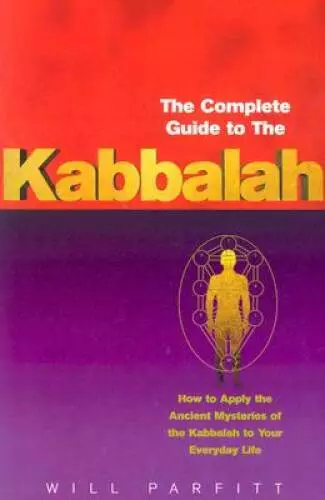
The Complete Guide to the Kabbalah: How to Apply the Ancient Mysteries of - GOOD
$13.35 Buy It Now 3d 14h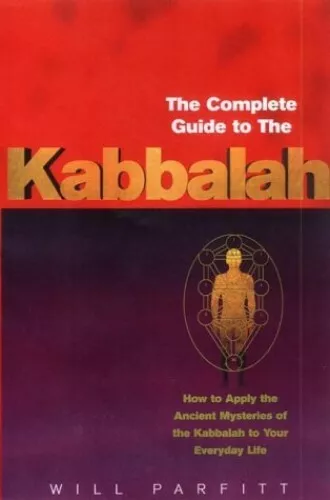
The Complete Guide To The Kabbalah: How to Apply ... by Parfitt, Will 0712614184
$8.83 Buy It Now 19d 23h
The Complete Guide to the Kabbalah: How to Apply the Ancient Mysteries of the Ka
$15.27 Buy It Now 29d 0h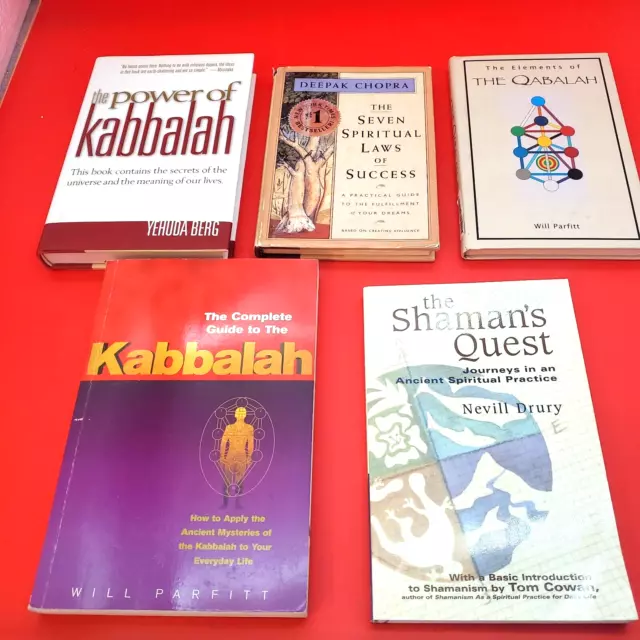
Kabbalah The Complete Guide to the Shamans Quest Qabalah Deepak Chopra Spiritual
$11.44 Buy It Now 13d 2h
The Complete Guide to the Kabbalah: How to Apply the Ancient Mysteries of the K,
$19.99 Buy It Now 16d 1h
Zohar Books Kabbalah Jewish Hebrew Volume 4,5,8,10,13,15,16,17,18,20,22,23
$85.00 Buy It Now 9d 2h
Secrets of Hebrew Words Rabbi Benjamin Blech HCDJ Gematria Kabbalah Jewish Rare
$59.99 Buy It Now 29d 4h
The Complete Guide To The Kabbalah: H..., Parfitt, Will
$12.99 Buy It Now 13d 21h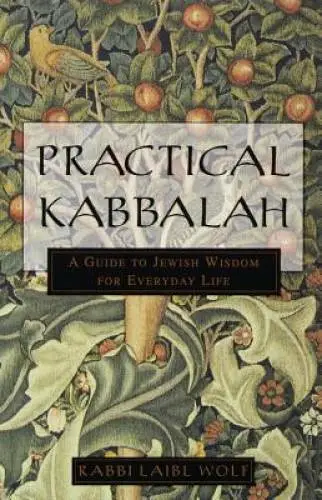
Practical Kabbalah: A Guide to Jewish Wisdom for Everyday Life - GOOD
$5.03 Buy It Now 12d 11h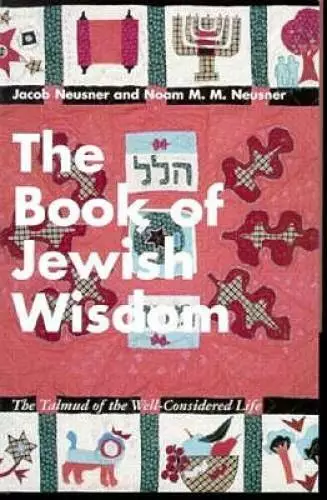
The Book of Jewish Wisdom: The Talmud of the Well-Considered Life - GOOD
$9.88 Buy It Now 5d 0h
Kabbalah - The Tree of Life Oracle: Sacred Wisdom to Enrich Your Life
$31.71 Buy It Now 16d 9h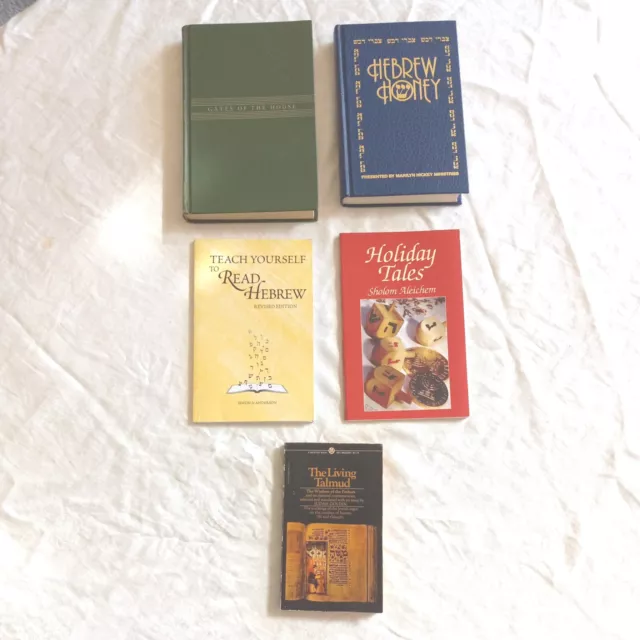
Lot of 5 Books Jewish Reading Hebrew Language Talmud Prayer S2C
$28.99 Buy It Now 18d 0h
Kabbalah - The Tree of Life Oracle: Sacred Wisdom to Enrich Your Life by Cherry
$34.05 Buy It Now 13d 8h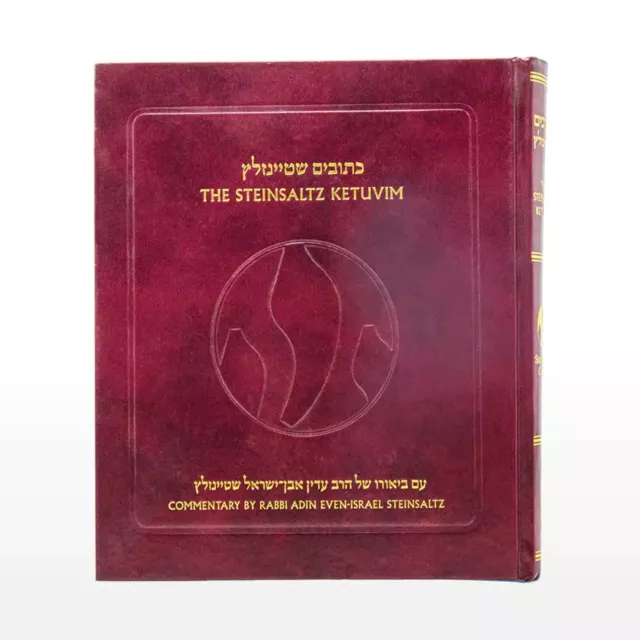
The Steinsaltz Ketuvim (Sacred Writings) English/Hebrew Jewish Bible Translation
$67.90 Buy It Now 16d 19h
Hebrew English Talmud MENAHOT I Bennet Jewish book
$8.99 Buy It Now 23d 22h
Jewish Magic and Kabbalah: A Guide to Ancient Hebrew Mysticism and Hermetic Qaba
$13.91 Buy It Now 4d 17h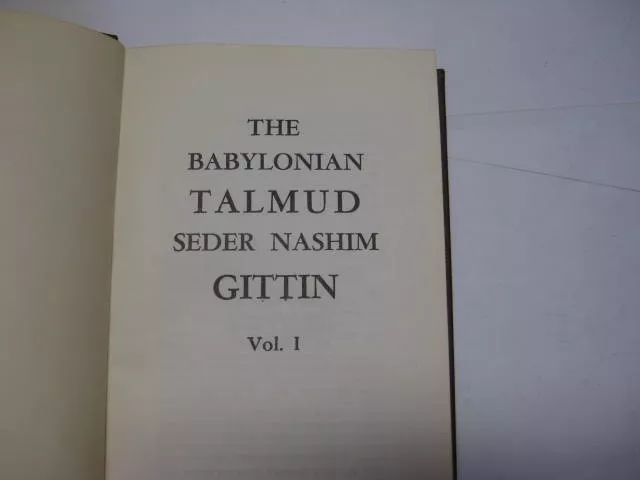
Hebrew English Talmud GITTIN I Bennet Jewish Judaica
$8.99 Buy It Now 13d 21h
A Wish Can Change Your Life: How to Use the Ancient Wisdom of Kabbalah to Make
$3.95 Buy It Now 26d 5h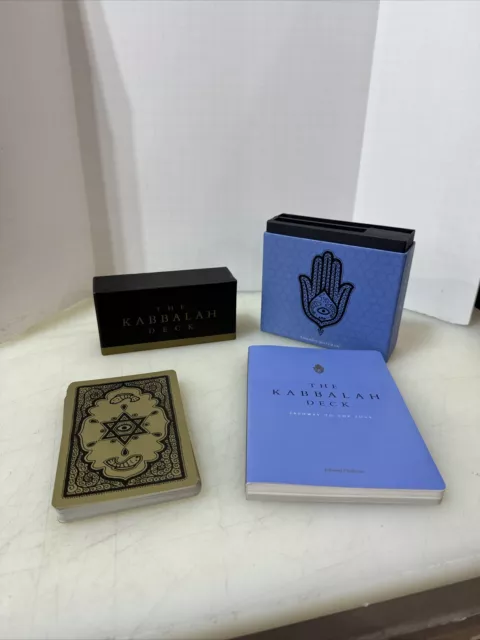
The Kabbalah Deck Tarot Oracle Edward Hoffman 2000
$30.00 Buy It Now 10d 3h
English Soncino Talmud & Aramaic ABODAH ZARA Jewish HEBREW FACING ENGLISH
$9.99 Buy It Now 29d 2h
Hebrew Mafteach Ha'agadot INDEX TO AGGADAH OF TALMUD מפתח האגדות מכל הש"ס
$9.99 Buy It Now 27d 15h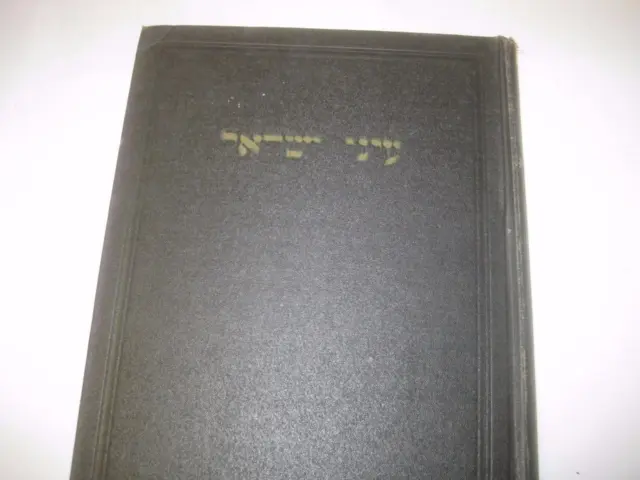
Hebrew 1937 FIRST EDITION Eine Yisrael by R. Israel Twersky CHASSIDIC KABBALAH
$14.99 Buy It Now 28d 1h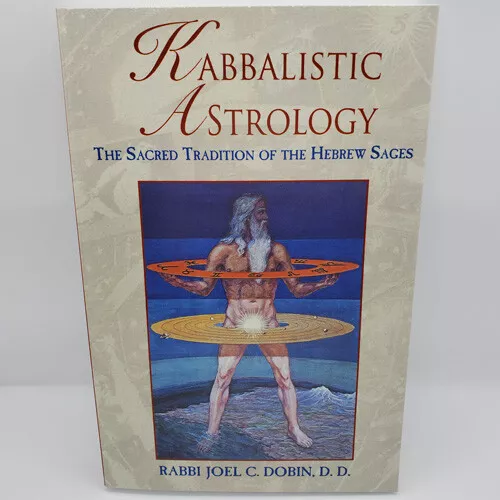
Kabbalistic Astrology: The Sacred Tradition of the Hebrew Sages (Brand New)
$29.00 Buy It Now 21d 12h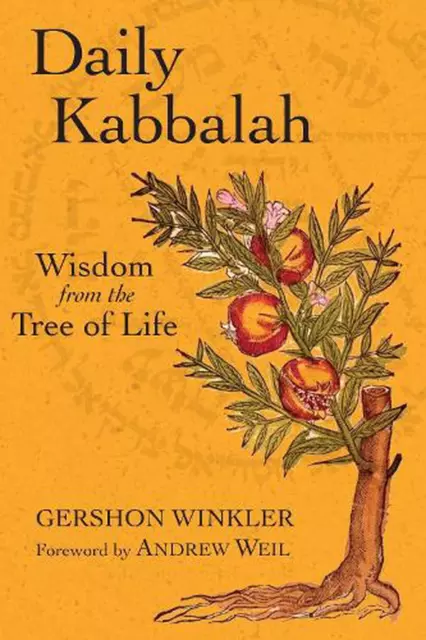
Daily Kabbalah: Wisdom from the Tree of Life by Gershon Winkler (English) Paperb
$31.95 Buy It Now 29d 9h
Hill - Jewish Magic and Kabbalah A Guide to Ancient Hebrew Mysticism - J555z
$27.40 Buy It Now 27d 21h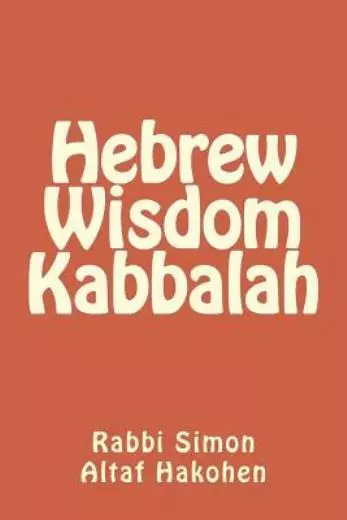
Hebrew Wisdom Kabbalah
$29.24 Buy It Now 29d 23h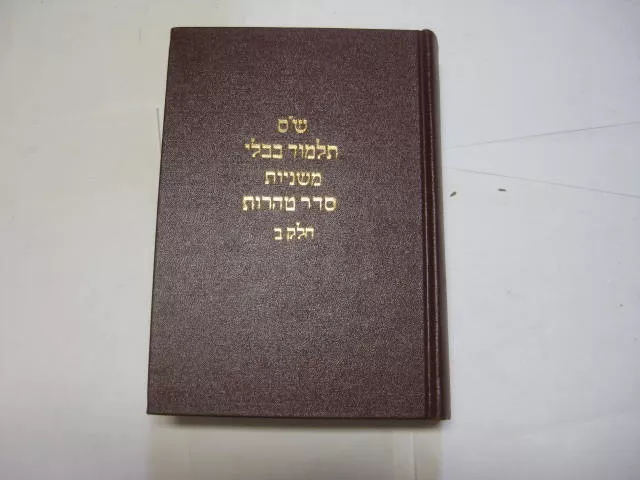
Hebrew English Talmud TAHOROT II Bennet Jewish Judaica
$8.99 Buy It Now 4d 8h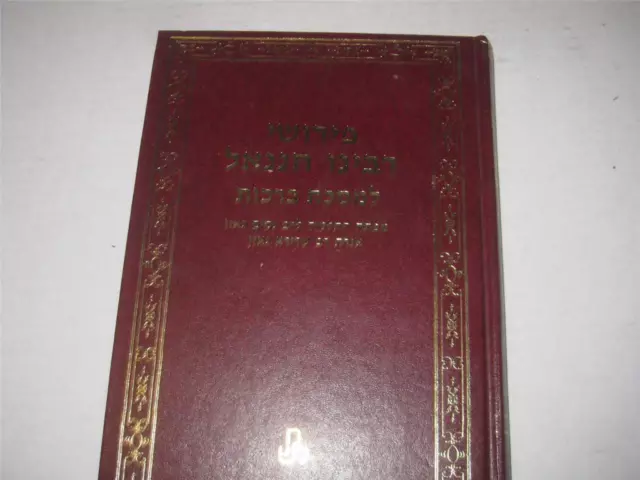
Hebrew Rabbenu Chananel ben Chushiel on Talmud Masechet Berachot רבינו חננאל
$9.99 Buy It Now 9d 3h
Kabbalah: the Tree of Life Oracle: Sacred Wisdom to Enrich Your Life by Cherry G
$36.48 Buy It Now 2d 8h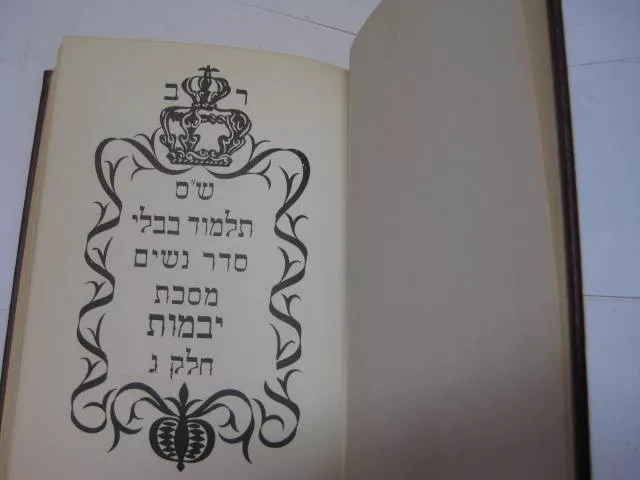
Hebrew English Talmud YEVAMOT III Bennet Jewish Judaica
$8.99 Buy It Now 4d 8h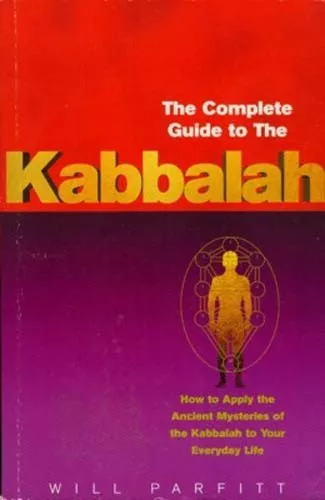 12 watchers
12 watchers Kabbalah Ancient Egyptian Hebrew Talmudic Wisdom for Today Tarot “Tree of Life”$99.85 Buy It Now
Kabbalah Ancient Egyptian Hebrew Talmudic Wisdom for Today Tarot “Tree of Life”$99.85 Buy It Now 6 watchers
6 watchers The Anatomy of Fate - Zev ben Shimon Halevi - Astrology Kabbalah Occult RARE ED$82.06 Buy It Now
The Anatomy of Fate - Zev ben Shimon Halevi - Astrology Kabbalah Occult RARE ED$82.06 Buy It Now
